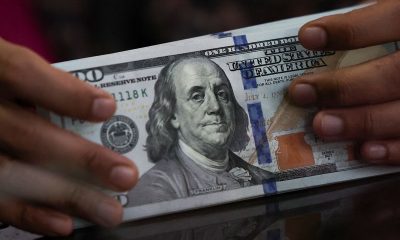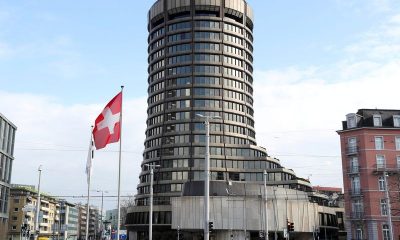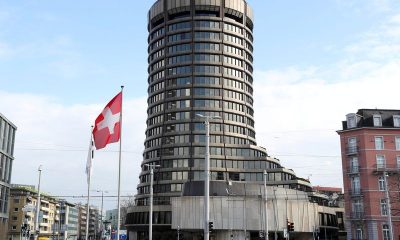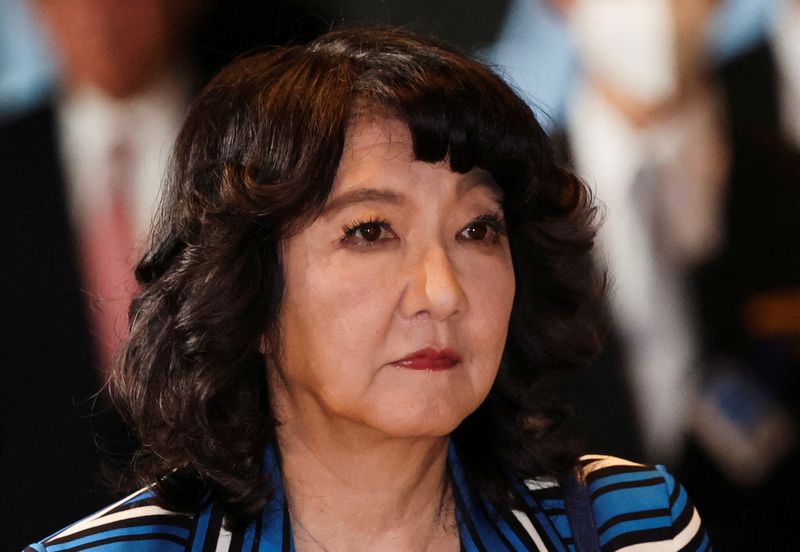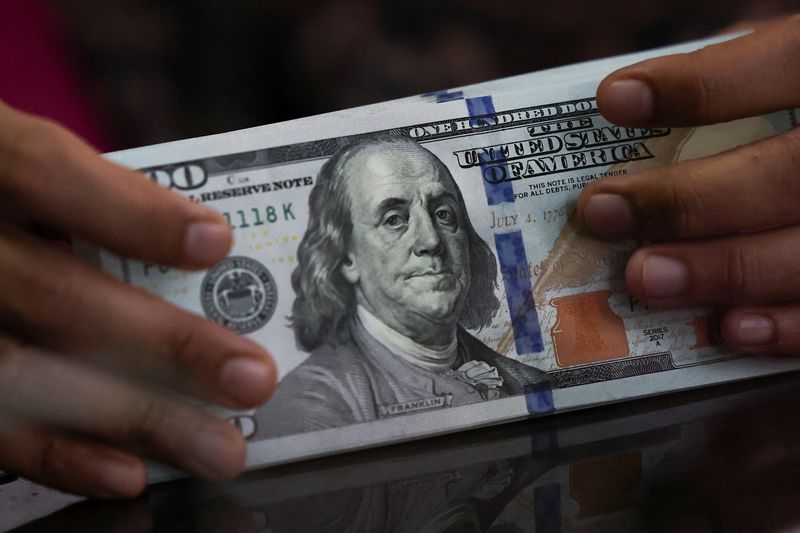Forex
Rouble jumps against dollar after Putin reimposes currency controls
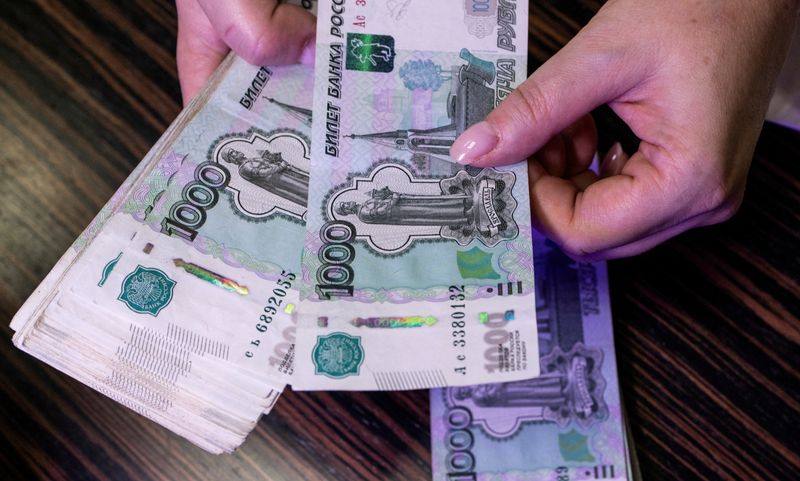
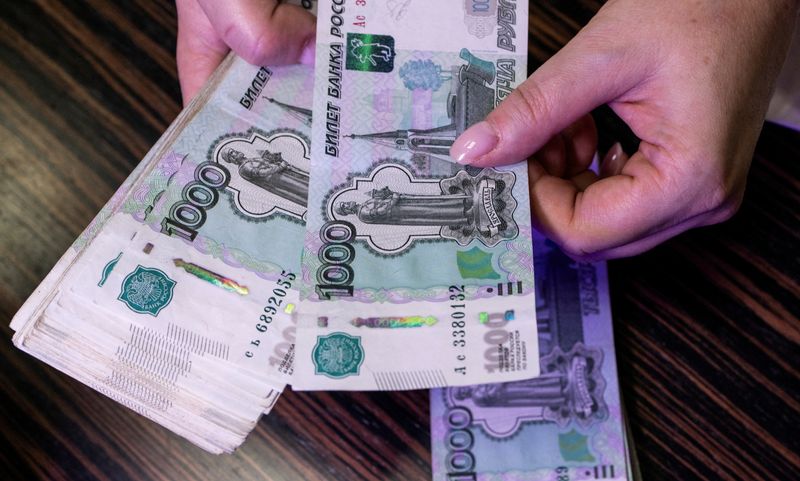
© Reuters. FILE PHOTO: An employee counts Russian 1000-rouble banknotes in a bank office in Moscow, Russia, in this illustration picture taken October 9, 2023. REUTERS/Maxim Shemetov/Illustration/File Photo
By Alexander Marrow
(Reuters) -Russia’s rouble leapt against the U.S. dollar on Thursday after President Vladimir Putin ordered the mandatory sale of foreign currency revenues for some exporters to buttress the currency.
The rouble collapsed to a record low in the weeks after Russia invaded Ukraine last year, before Moscow imposed similar capital controls that saw it recover to a seven-year high.
But the currency has charted a steadily downward course this year, under pressure from capital outflows, falling exports and recovering imports.
“Today, the rouble will strengthen … even by the end of the year we will see the rouble at 88-92 (per dollar),” said Yevgeny Kogan, professor at Russia’s Higher School of Economics.
By 1150 GMT, the rouble was 3.2% stronger against the dollar at 97.00, after earlier reaching 96.4550, its strongest since Sept. 27.
Kogan warned, however, that by 2025-2026 businesses would form plans based on a rouble rate of 100-105.
The rouble gained 3.4% to 102.95 versus the euro and 3.1% against the yuan to 13.29.
The CEO of Russia’s largest lender Sberbank German Gref said he expected the rouble to strengthen to around 90 to the dollar.
“If the parameters of our export goods remain the same … some more strengthening is possible,” the TASS news agency quoted him as saying. “The regular, fundamental exchange rate today is 85-90 per dollar.”
The government late on Wednesday said Putin had signed a decree reintroducing capital controls for an undisclosed list of exporting firms, a measure that has been on the cards since the rouble tumbled into triple digits in August.
The slump forced the central bank into an emergency 350 basis points interest rate rise, but the rouble has failed to recover significantly, weakening to a more than 18-month low of 102.3450 this week.
‘SIGN OF DESPAIR’
The government said the new capital controls would last for six months and require that companies submit plans to the Bank of Russia and Rosfinmonitoring, Russia’s financial monitoring agency, which would ensure that they comply.
“The main purpose of these measures it to create long-term conditions for increasing the transparency and predictability of the FX market, reducing the opportunity for currency speculation,” said First Deputy Prime Minister Andrei Belousov.
The central bank endorsed the measures, a shift in its stance, after it previously warned of the inefficiency of currency controls. On Thursday, the bank said the measures would improve liquidity and reduce short-term volatility.
“The rouble is even less tradable for foreign investors after Russia re-imposed some capital controls,” Piotr Matys, senior FX analyst at In Touch Capital Markets.
“This decision can be interpreted at least by some market participants as a sign of despair to stabilise the rouble.”
Everything depends on how rigidly and effectively the controls are implemented, said Dmitry Polevoy, head of investment at Locko-Invest.
“The participation of Rosfinmonitoring allows us to count on ‘success’,” he said. “But there is still the outflow of capital.”
, a global benchmark for Russia’s main export, was up 1.4% at $87.03 a barrel.
Russian stocks were mixed, with the dollar-denominated RTS index was up 2.1% to 1,026.3 points, while the rouble-based MOEX Russian index fell 1% to 3,161.0 points.

 Forex3 years ago
Forex3 years agoForex Today: the dollar is gaining strength amid gloomy sentiment at the start of the Fed’s week

 Forex3 years ago
Forex3 years agoUnbiased review of Pocket Option broker

 Forex3 years ago
Forex3 years agoDollar to pound sterling exchange rate today: Pound plummeted to its lowest since 1985

 Forex3 years ago
Forex3 years agoHow is the Australian dollar doing today?

 Cryptocurrency3 years ago
Cryptocurrency3 years agoWhat happened in the crypto market – current events today

 World3 years ago
World3 years agoWhy are modern video games an art form?

 Commodities3 years ago
Commodities3 years agoCopper continues to fall in price on expectations of lower demand in China

 Economy3 years ago
Economy3 years agoCrude oil tankers double in price due to EU anti-Russian sanctions





